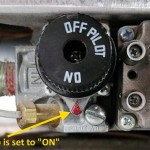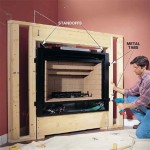Corner Ventless Gas Fireplace Mantels: A Comprehensive Guide
Corner ventless gas fireplace mantels present a unique combination of aesthetic appeal and functional heating for homeowners seeking to maximize space and minimize installation complexities. Unlike traditional fireplaces requiring chimneys or extensive venting systems, ventless models operate without direct external exhaust, making them a versatile option for various home layouts, particularly corners often underutilized. This article explores the key features, benefits, design considerations, safety aspects, installation nuances, and maintenance requirements associated with corner ventless gas fireplace mantels.
Understanding the Functionality of Ventless Gas Fireplaces
Ventless gas fireplaces, also known as unvented or vent-free fireplaces, function by burning natural gas or propane with a high degree of combustion efficiency. This process drastically reduces the production of harmful byproducts such as carbon monoxide. Instead of venting exhaust gases outside, they are released directly into the room. Integrated oxygen depletion sensors (ODS) play a critical safety role. These sensors continuously monitor the oxygen levels in the room. If oxygen levels drop below a safe threshold, the ODS automatically shuts off the gas supply to the fireplace, preventing the buildup of carbon monoxide. The efficiency of ventless gas fireplaces, typically ranging from 99% to 99.9%, translates to nearly all the heat generated being released into the living space, significantly reducing energy waste. The effectiveness of these fireplaces hinges on proper operation and adherence to manufacturer guidelines.
The high efficiency is achieved through advanced burner designs and catalytic converters, which further minimize emissions. While the name "ventless" suggests no emissions, it is crucial to understand that carbon dioxide and water vapor are still produced. Therefore, adequate ventilation within the room is paramount. Building codes often stipulate minimum room sizes and ventilation requirements for ventless appliances to ensure safe operation. Improper ventilation can lead to humidity increases and, in extreme cases, carbon monoxide accumulation. Regular inspection of the ODS system is essential to ensure its continued functionality.
Ventless gas fireplaces are primarily designed for supplemental heating, providing warmth to a specific area rather than heating an entire house. Their heating capacity is typically measured in British thermal units (BTUs). Selecting the appropriate BTU rating for the room size is crucial for optimal performance and safety. Overly powerful units can lead to excessive heat and humidity, while underpowered units may not adequately warm the space.
Advantages of Corner Placement and Ventless Technology
The corner placement of a ventless gas fireplace offers several distinct advantages. Firstly, it optimizes space utilization. Corners, often awkward areas in a room, can be transformed into focal points with the addition of a fireplace mantel. This is particularly beneficial in smaller rooms where maximizing floor space is a priority. Secondly, corner fireplaces strategically distribute heat more evenly throughout the room. The angled placement allows for wider heat dispersion compared to a fireplace positioned against a flat wall. Thirdly, corner fireplaces introduce a unique design element, adding visual interest and architectural character to the room. They can soften the hard lines of a room and create a cozy and inviting atmosphere.
The ventless technology further enhances the appeal of corner gas fireplaces. The absence of venting requirements simplifies installation, reducing both cost and complexity. Ventless fireplaces can be installed in virtually any room with a gas line, as opposed to being restricted to areas with existing chimneys. This flexibility opens up a wider range of design possibilities and allows homeowners to integrate a fireplace into renovation projects more easily. Moreover, ventless fireplaces are typically more energy-efficient than vented models, translating to lower heating bills. The high energy efficiency stems from the fact that virtually all the heat generated is released into the room rather than being lost through the chimney.
Beyond the practical benefits, corner ventless gas fireplaces also offer aesthetic versatility. They can be designed to complement a wide range of interior styles, from traditional to contemporary. The mantel can be constructed from various materials, including wood, marble, stone, and metal, allowing homeowners to customize the look to match their existing decor. The firebox itself can feature different flame patterns and ember bed designs, further enhancing the visual appeal.
Design Considerations for Corner Ventless Gas Fireplace Mantels
Designing a corner ventless gas fireplace mantel involves careful consideration of several factors, including room size, style, material choices, and safety clearances. The size of the fireplace and mantel should be proportionate to the room. A large, imposing mantel in a small room can feel overwhelming, while a small, inconspicuous fireplace in a large room may appear insignificant. The style of the mantel should complement the existing decor of the room. Traditional mantels often feature ornate carvings and classical details, while contemporary mantels tend to be sleek and minimalist.
Material selection plays a crucial role in the overall aesthetic and durability of the mantel. Wood mantels offer warmth and a traditional feel, but they require careful sealing and finishing to protect them from heat and moisture. Stone mantels, such as marble or granite, are durable and elegant, but they can be heavy and require professional installation. Metal mantels offer a modern, industrial look and are often heat-resistant. Composite materials, such as engineered wood or faux stone, offer a balance of affordability, durability, and aesthetic versatility.
Safety clearances are paramount when designing a corner ventless gas fireplace mantel. Manufacturers specify minimum clearances from combustible materials, such as walls, furniture, and curtains. These clearances must be strictly adhered to prevent fire hazards. The placement of electrical outlets and wiring should also be carefully considered to avoid potential hazards. It is advisable to consult with a qualified contractor or fireplace installer to ensure that the design meets all safety codes and regulations.
The integration of shelving, storage compartments, or media centers into the mantel design can enhance its functionality. Shelving can provide space for displaying decorative items, while storage compartments can conceal media equipment or firewood. The incorporation of a media center can transform the corner fireplace into a focal point for entertainment. However, it is crucial to maintain adequate clearances around the fireplace and avoid placing flammable materials too close to the heat source.
Safety Precautions and Operational Guidelines
While ventless gas fireplaces are designed with safety features, it is essential to understand and adhere to safety precautions and operational guidelines. Regular maintenance is crucial for ensuring the safe and efficient operation of the fireplace. This includes inspecting the burner for clogs or debris, cleaning the glass front panel, and verifying the proper functioning of the ODS system. The ODS sensor should be tested periodically to ensure that it is functioning correctly. A malfunctioning ODS system can compromise safety and should be repaired or replaced immediately.
Carbon monoxide detectors should be installed in the room where the ventless gas fireplace is located. These detectors provide an additional layer of protection by alerting occupants to the presence of carbon monoxide, even if the ODS system fails. Batteries in the carbon monoxide detector should be tested regularly and replaced as needed. Never use the fireplace in a confined or poorly ventilated space. Ensure that there is adequate air circulation in the room to prevent the buildup of carbon dioxide and water vapor. Opening a window or door slightly can improve ventilation.
Avoid using the fireplace as a primary heat source. Ventless gas fireplaces are designed for supplemental heating and should not be used to heat an entire house. Overuse can lead to excessive humidity and potentially compromise indoor air quality. Never leave the fireplace unattended while it is operating. Keep children and pets away from the fireplace to prevent burns or other injuries. Store flammable liquids and materials away from the fireplace. Do not use the fireplace to burn wood, paper, or other combustible materials. Follow the manufacturer's instructions for operation and maintenance. Any repairs or modifications should be performed by a qualified technician.
Before purchasing a ventless gas fireplace, verify that it is approved for use in your local jurisdiction. Building codes and regulations regarding ventless appliances vary depending on location. Some jurisdictions may restrict the use of ventless fireplaces or require specific installation requirements. Contact your local building department or fire marshal to obtain the necessary permits and ensure compliance with all applicable codes.

Corner Ventless Gas Fireplace Visualhunt

24 Vail Standard Corner Cabinet Mantel Built In Base Empire

Corner Ventless Gas Fireplace Visualhunt

Hearthsense 42 In Corner Ventless Natural Gas Tower Fireplace Cherry 170090 The Home Depot

Empire Cabinet Mantels For Vail Premium Gas Fireplacesfor 32 Fireplace Dark Oak Corner Mantel Decor

Corner Ventless Gas Fireplace Visualhunt

Bay Front Vent Free Fireplace A Stunning Addition To Your Home

Procom Heating Dual Fuel Ventless Gas Fireplace System With Corner Combo Mantel 10 000 Btu T Stat Control 170061 The Home Depot

Corner Ventless Gas Fireplace Visualhunt
Corner Two Sided Gas Fireplace Heat Glo
Related Posts








